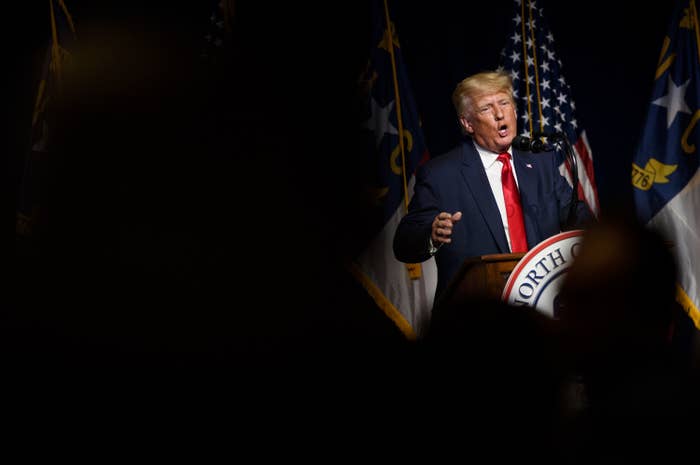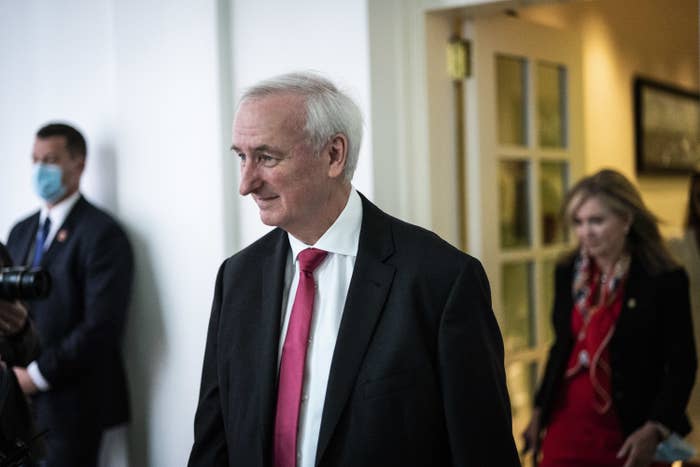
WASHINGTON — Former president Donald Trump pushed the Justice Department last year to bring an election challenge in the US Supreme Court that largely copied Texas’s failed case word for word while amping up the conspiracy theories.
House Democrats on Tuesday released a cache of emails and other documents revealing how senior Trump administration officials urged DOJ to intervene in postelection legal fights on Trump’s behalf. The collection included a draft lawsuit that Trump wanted the Justice Department to file in the Supreme Court challenging President Joe Biden’s wins in Pennsylvania, Georgia, Michigan, Arizona, Nevada, and Wisconsin.
The department did not bring the case, and Trump’s private efforts to contest the election results were rejected at every level of the legal system, including before the Supreme Court. The Wall Street Journal first reported in January on Trump’s push to get DOJ to take his fight to the justices, but the draft released by the House Oversight Committee hadn’t been public before.
A side-by-side review shows that Trump’s proposed complaint would have simply reargued Texas’s unsuccessful one, while also adding language that leaned into false and debunked conspiracy theories that Trump and his allies were touting at the time about compromised voting technology. Texas filed its complaint on Dec. 7; the Supreme Court tossed it out less than a week later, finding Texas lacked standing to sue other states over how they managed voting.
Several weeks later, on Dec. 29, the newly released emails show that White House staff and an outside lawyer who had worked on Texas’s case tried to pitch Trump’s draft — at his direct request, they said — to Justice Department officials.
Large sections of Trump’s draft — the arguments, formatting, and footnotes — are copied from Texas’s complaint verbatim, substituting “the United States” as the party bringing the case for Texas or “Plaintiff State.” One of the few substantive differences is that Texas sued Pennsylvania, Georgia, Michigan, and Wisconsin; Trump’s case would have added Arizona and Nevada.
Texas’s filing: “Plaintiff State alleges that each of the Defendant States flagrantly violated constitutional rules governing the appointment of presidential electors. In doing so, seeds of deep distrust have been sown across the country.”
Trump’s draft: “The United States alleges that each of the Defendant States flagrantly violated constitutional rules governing the appointment of presidential electors. In doing so, seeds of deep distrust have been sown across the country.”
The draft not only copied Texas’s legal arguments but also much of the rhetorical flair.
The introduction of Trump’s proposed complaint read: “The United States therefore brings this action to ensure that the U.S. Constitution does not become simply a piece of parchment on display at the National Archives.”
Texas began with the same image: “Either the Constitution matters and must be followed, even when some officials consider it inconvenient or out of date, or it is simply a piece of parchment on display at the National Archives.”
Trump’s proposed lawsuit diverged from Texas’s in arguing why the United States had the legal authority to challenge election results in individual states. Trump’s team proposed language that the United States could intervene “to protect the interests of all citizens … in the fair and constitutional conduct of elections used to appoint presidential electors.” The Wall Street Journal previously reported that senior Justice Department officials concluded this argument wasn’t viable.

Another difference between the two documents is that Trump’s draft leaned into conspiracy theories being pushed by Trump and other Republicans — particularly lawyer Sidney Powell, who brought a slew of unsuccessful election challenges — that questioned the reliability of voting technology supplied by a private vendor, Dominion Voting Systems.
Texas’s complaint included one section that mentioned that several states named in the case had contracted with Dominion. Trump’s proposed complaint brought up Dominion in multiple places and made it a freestanding argument. Trump would have had the Justice Department argue that there were “grave questions” about the “vulnerability” of electronic voting machines used in the last election, name-checking Dominion.
There is no evidence that voting technology supplied by Dominion in the presidential election was compromised or involved in election fraud. Dominion is pursuing billion-dollar defamation suits against Powell, Rudy Giuliani, Fox News, and My Pillow CEO Mike Lindell for pushing false claims and conspiracy theories about the company.
The emails released by House Democrats show that Molly Michael, a White House aide, had sent the draft complaint on Dec. 29 to then–acting attorney general Jeffrey Rosen and other senior DOJ officials “for your review.” Michael wrote that she was doing so at Trump’s request. Michael also wrote she’d shared the document with Trump’s chief of staff Mark Meadows and White House counsel Pat Cipollone.
The emails also show that Kurt Olsen, a lawyer who had worked on Texas’s case, tried to contact several DOJ officials the same day to pitch the draft. He described it as being “modeled” on Texas’s filing.
In one message timestamped 10:57 a.m. on Dec. 29, Olsen wrote to Jeffrey Wall, the US solicitor general at the time, to say that Trump had “directed” Olsen to discuss the draft with Rosen but that he hadn’t been able to reach Rosen “despite multiple calls/texts.” At 12:45 p.m., Olsen wrote to John Moran, who was Rosen’s chief of staff, indicating that Moran had called Olsen about the draft but insisting that Trump had “directed” Olsen to brief Rosen in person. Olsen told Moran that Trump had “seen” the draft.
The emails show that Moran kept Rosen in the loop about Olsen’s communications and passed along a copy of the draft but that he also told Olsen a meeting wasn’t possible because Rosen was busy at the White House. Moran indicated Olsen had already started driving to DC in anticipation of getting a meeting. That evening, Olsen sent an email suggesting he did connect with Rosen, but it wasn’t clear how; he wrote to Moran that Rosen had asked for examples of Supreme Court cases that touched on legal arguments raised in the draft. The New York Times reported that an unidentified source said Olsen and Rosen never met.
Olsen did not immediately return a request for comment. In another set of emails, Steven Engel, who was head of the Justice Department’s Office of Legal Counsel at the time, suggested that the draft appeared to have been written by Larry Joseph, another Washington-based lawyer who had worked on the Texas case. Joseph told BuzzFeed News in an email that he wasn’t involved in the effort to convert the Texas case into the draft case that Trump wanted the Justice Department to bring on behalf of the US government.

